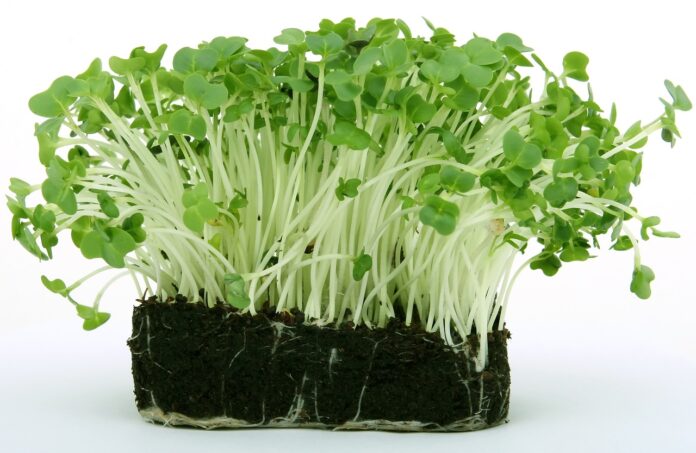Cress it’s a group of fast-growing, edible leafy plants belonging to the family Brassicaceae, renowned for their peppery flavor and versatility in culinary and medicinal applications. Cress encompasses several varieties, including garden cress (Lepidium sativum), watercress (Nasturtium officinale), and upland cress (Barbarea verna).
Interesting Facts About Cress:
- Fast-Growing Herb: Garden cress (Lepidium sativum) is one of the quickest herbs to grow, with seeds germinating within 2-4 days. It can be harvested just 1-2 weeks after planting, making it ideal for rapid cultivation in homes or gardens
- Edible Versatility: The peppery-tasting stems, leaves, and seeds of cress are used in various dishes, such as salads, sandwiches, and egg-based recipes. Its sprouts are also a common choice for adding flavor and texture
- Scientific Innovations with Cress: Arabidopsis thaliana, a type of thale cress, holds a significant place in scientific research. It was the first plant to have its entire genome sequenced in 2000, setting a record for plant genetics and advancing our understanding of plant biology.
- Cress in Space Exploration: Thale cress has been extensively used in space experiments, starting with its growth aboard the Mir space station in the late 1990s and later aboard the International Space Station (ISS). It became the first plant to complete a life cycle in microgravity, proving its ability to grow and reproduce in space.
- Quick Germination and Harvest
Garden cress seeds germinate rapidly, typically within 2-4 days, making them perfect for beginners in gardening. The edible shoots are ready for harvesting in as little as 1-2 weeks, offering almost instant gratification for cultivators - Peppery Taste and Culinary Uses
The leaves and stems of garden cress have a distinct peppery, tangy flavor, often compared to mustard. This makes it a popular ingredient in salads, sandwiches, and dishes featuring eggs or cheese, adding a sharp, refreshing taste - Rich in Nutrients
Garden cress is a powerhouse of vitamins (A, C, and K) and minerals like manganese, potassium, and iron. These nutrients contribute to its reputation as a superfood, supporting bone health, cardiovascular health, and overall immunity - Support for Lactation
Traditional medicine values garden cress seeds for their ability to stimulate milk production in breastfeeding mothers. The seeds are rich in protein and iron, making them especially beneficial during postpartum recovery - Hydroponic Growth Adaptability
Cress is highly versatile in cultivation methods, growing successfully in water-filled pots or even on moist cotton or paper towels. This adaptability makes it an excellent choice for urban gardening and classroom experiments - English Culinary Tradition
In England, cress is a common addition to sandwiches made with boiled eggs and mayonnaise. This simple yet flavorful snack highlights its widespread culinary use - Cautions in Consumption
Despite its numerous benefits, excessive intake of cress can disrupt iodine absorption in the thyroid, leading to hypothyroidism. Pregnant women are advised to avoid it as it may induce uterine contractions - Compact Growth for Small Spaces
Growing densely in clusters, cress is perfect for small gardens or even indoor pots. Its compact nature allows for efficient use of space, making it a favorite for urban farmers - Thrives in Poor Soil
Garden cress can grow in low-quality soils as long as it receives adequate water. This resilience makes it a low-maintenance plant suitable for beginners - Mood-Boosting Vitamin B2
Cress contains vitamin B2, which supports the nervous system and may help alleviate symptoms of anxiety, memory issues, and cognitive disorders like Alzheimer’s disease
